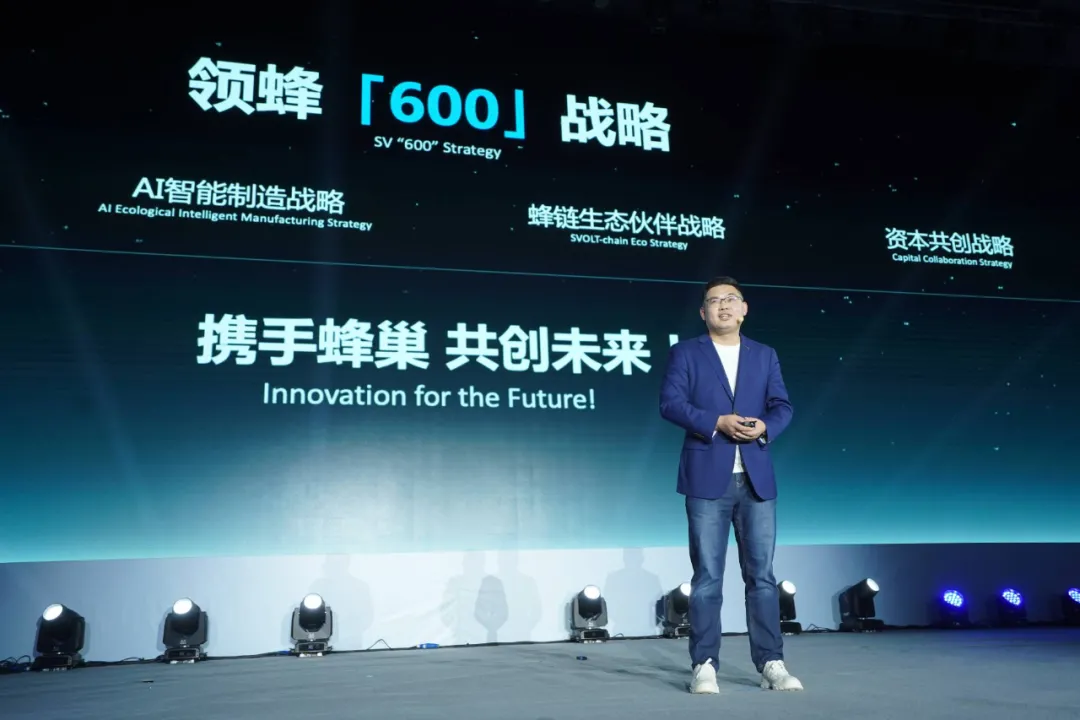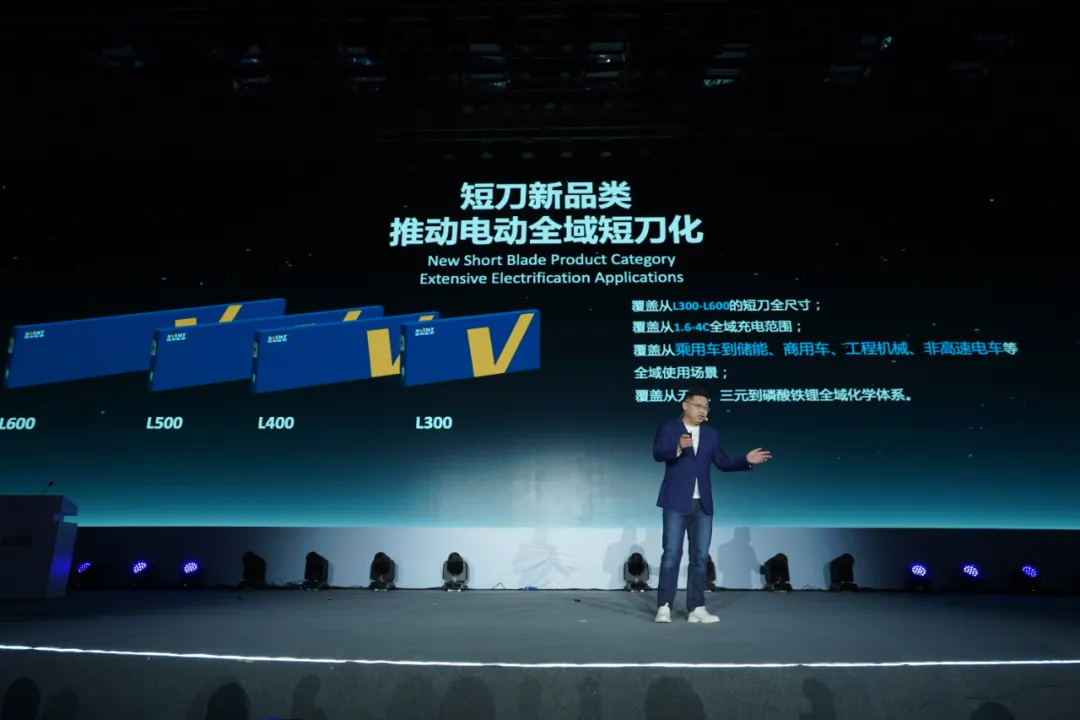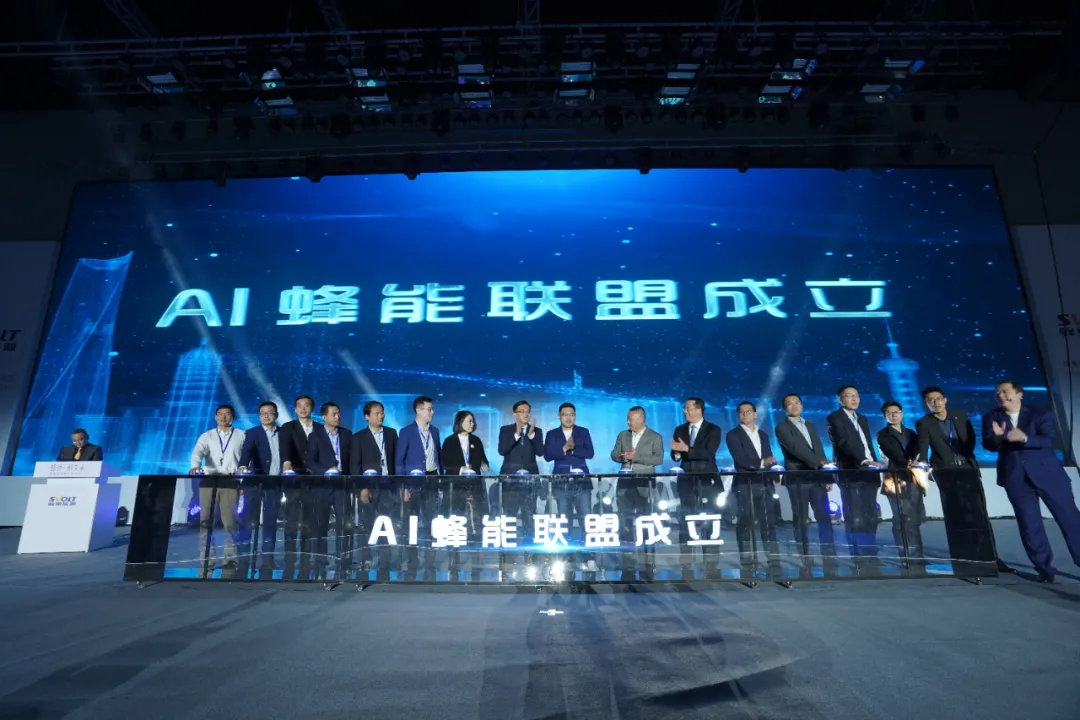Author: Qiu Kaijun
How to seize the explosive demand for power and energy storage batteries like a volcano? The answer from the cutting-edge battery enterprise Fenteng Energy is: fast, fast, and faster.
On December 8th, Fenteng Energy held its second Battery Day in Changzhou. Yang Hongxin, Chairman of Fenteng Energy, announced the “Leading Fenteng 600” strategy – challenging a production capacity of 600 GWh and shipment of 450 GWh by 2025.

This is not the first time Fenteng has adjusted its production capacity targets, and the magnitude of this adjustment is surprising. At the first Battery Day in 2020, Fenteng Energy aimed to achieve a shipment volume of only 40GWh by 2025. Later, Fenteng proposed a production capacity plan of 200GWh by 2025, followed by another increase to 320GWh. This time, production capacity has been raised to 600GWh again.
The production capacity of 600GWh is also based on target calculations. Fenteng Energy hopes to occupy a 25% share of the total estimated global demand for transportation and energy storage of 1.8TWh by 2025, which is equivalent to a production output of 450GWh. To achieve 450GWh of output with a 75% utilization rate of production capacity requires a production capacity of 600GWh.
Is Fenteng Energy’s goal just empty talk?
Yang Hongxin provided many pieces of evidence in his speech to demonstrate the rationality and achievability of the 600GWh target.
First, he mentioned that they have already received orders of 400GWh in the passenger car sector for 2025. “So we are very confident in achieving this target.”
However, he also admitted that 600GWh is a huge goal, “requiring more than a dozen factories, globalization, more than 200 billion yuan of investment, and nearly 80,000 people to organize, how to support such a large-scale strategy?”
Therefore, Fenteng has proposed four supporting sub-strategies for this big strategy: Category Innovation Strategy, AI Intelligent Manufacturing Strategy, Bee Chain Ecological Partner Strategy, and Capital Co-creation Strategy.
Rapid Growth in Installation Capacity, and Product Types are Further Expanded
At the beginning of the Battery Day, Yang Hongxin reviewed the achievements of Fenteng Energy.
Three-year-old Fenteng Energy has already made a name for itself in the market. In October, Fenteng Energy ranked ninth in the global power battery installation capacity rankings.
Currently, Fenteng Energy has signed more than 30 fixed-point projects, including strategic cooperation with a top-five host factory in Europe and won many key projects.At the product level, as the first enterprise in the world to produce cobalt-free batteries on a large scale, CATL will start mass production of cobalt-free batteries for cars in 2021. The first model to adopt this technology is the ORA Cherry Cat. In addition, the first model of the Salon brand of the Great Wall priced at over 400,000 yuan, the MECHA Dragon, will also be equipped with cobalt-free batteries and an 800-volt fast charging system.
In addition, at the end of October, CATL’s first-generation L600 short blade lithium iron phosphate battery went into mass production at the Jintan factory in Changzhou.
At the product level, CATL’s strategy is to lead the industry through continuous innovation. At this Battery Day, Robin Zeng personally interpreted the category innovation strategy of the four sub-strategies.
CATL’s previous products were innovative in material systems, assembly processes, and packaging specifications, but this time they are unified in battery specifications, called the Short Blade new category.
Continuing Great Wall Motors’ category innovation experience, CATL launched the Short Blade new category.
Compared with BYD’s blade batteries, CATL’s short blade batteries are also square and thin, but shorter in length, ranging from about 300mm to 600mm.
CATL has unified all products with this specification, achieving short blade standardization, covering the full range of sizes from L300 to L600, as well as the full range of charging from 1.6-4C, covering full scene use scenarios from passenger cars, energy storage, commercial vehicles, engineering machinery, non-high-speed electric vehicles, and covering full chemical systems from cobalt-free, ternary to lithium iron phosphate.
Specifically in the BEV field, CATL Energy will launch two major series of products, the L600 and L300. The L600 LFP (lithium iron phosphate) system can cover mainstream models with a range of 500-600km. At the same time, through the Jelly Battery 0 Heat-Control technology, the L600 range can be extended to 800km for the NCM Jelly System. The L300 product is mainly based on 2.2-4C fast charging system and is compatible with 800V high-end models. In the future, the low-nickel high-manganese 5V spinel system can effectively improve safety while reducing costs.
CATL’s Jelly Battery is very interesting. The so-called Jelly Battery refers to a battery that uses a gel-like electrolyte, with high conductivity and self-healing properties. On the one hand, it maintains the high energy density of a ternary battery: 230Wh/kg, and on the other hand, it has good safety. In the needle-piercing test of the battery, it can achieve no smoke or fire, which should be an industry first for ternary batteries.
In the PHEV field, CATL Energy will launch the L400 series of products, focusing on long-range, low-cost PHEVs, using the LFP system that considers energy and power simultaneously, to create high safety and long life.
 Generally speaking, PHEV batteries adopt ternary or even nickel-hydrogen batteries because of the high power density required. Hive Energy uses lithium iron phosphate for PHEV batteries, which solves the power density problem and reduces costs. Moreover, this product also supports the production of PHEV products with pure electric endurance of 150km-200km.
Generally speaking, PHEV batteries adopt ternary or even nickel-hydrogen batteries because of the high power density required. Hive Energy uses lithium iron phosphate for PHEV batteries, which solves the power density problem and reduces costs. Moreover, this product also supports the production of PHEV products with pure electric endurance of 150km-200km.
In the field of energy storage, Hive Energy will launch the L500 series of products, which will comprehensively improve the safety, energy density, temperature control, and cost of energy storage products through CTP technology.
In the commercial vehicle field, Hive Energy will launch the L500 series of products, which are compatible with energy storage products and VDA battery boxes. Through CTP technology, it surpasses the VDA battery box in terms of product safety, grouping efficiency, and cost control.
In the non-high-speed vehicle field, Hive Energy will launch the L400, which uses the mature LFP and cobalt-free E platform system for shared passenger cars with quality standards for vehicle class, providing cost-effective and high-standard system solutions for non-high-speed electric vehicles.
At the same time, Hive Energy also provides systematic technology and product innovations for the entire range of short tab batteries, including battery pack 4C all-weather fast charging technology, efficient thermal management technology that adapts to 800V high-voltage platforms, cold bee thermal resistance technology, cloud-based security warning technology, etc., to ensure high safety, high performance, and high efficiency in manufacturing of short tab batteries.
Yang Hongxin stated that short tab batteries will become the most competitive representative product in the future.
In addition to the tab battery technology, Hive Energy is also researching and developing 800V high-voltage architecture, 4C fast charging technology, and continues to improve cobalt-free batteries and 0 heat loss safety technology.
In terms of integrated CTC, Hive is developing a battery pack that can carry 130kWh of electricity.
In terms of solid-state batteries, Hive’s prototype has an energy density of 350Wh/kg and predicts a cycle life of over 1000 weeks through needle piercing and 200℃ hot box experiments. Yang Hongxin said that its performance is fully ahead of similar technology companies in the United States.
Hive Energy’s technology and product layout is very wide, with various types and enormous research and development pressure. Yang Hongxin revealed that Hive has invested more than 5 billion yuan in research and development expenses, and will invest another 25.2 billion yuan in the next five years. Moreover, Hive also plans to build 10 major research and development centers worldwide and form a research and development team of over 5,000 people.
Rapidly Expanding Production Capacity, Focusing on AI Intelligent Manufacturing
Hive aims to challenge 600GWh of production capacity and already has some production capacity.
Currently, Hive Energy has eight bases under construction, with a production capacity of 297GWh, including Germany 30GWh, Southwest region: Suining 29GWh, Chengdu 64GWh; Yangtze River Delta region: Changzhou 67GWh, Huzhou 30GWh, Ma’anshan 20GWh, Yancheng 23GWh, Nanjing 9GWh; Central China region: Shangrao 23GWh.After adjusting the total production capacity target to 600GWh, Hive Power plans to increase its current planned capacity. In terms of overseas capacity, in addition to the 30GWh in Europe, Hive Power also plans to build 20GWh of capacity in India, South America and ASEAN, build 20GWh in the northwest energy storage base, raise capacity to 180GWh in the southwest region, expand to 87GWh, newly build 80GWh in the northern region, expand to 38GWh, reaching 187GWh in the Yangtze River Delta, and expand 60GWh to reach 83GWh in the Central China region. However, high production capacity alone is not enough. If efficiency is low and utilization rate is insufficient, more production capacity will be of no avail.
On Battery Day, Hive Power also announced its AI ecological smart manufacturing strategy, hoping to support customer delivery requirements under rapid growth with faster production efficiency, higher manufacturing technology, and lower manufacturing costs on the basis of expanding capacity.
The goal of the AI ecological smart manufacturing strategy is to establish a consistent, reliable, highly flexible, and low-controllable cost, high-quality, fast and stable delivery under the comprehensive quality rate of more than 95%, the overall equipment effectiveness (OEE) level driven up to 80%, personnel optimization of 65%, and energy consumption reduced by over 20% for a single line 5GWh capacity. To achieve this goal, Hive Power will enhance efficiency collaboration, intelligent upgrade of production line equipment, consistency improvement of quality, production and logistics simulation and industrial Internet of Things in five aspects of design and manufacture.
In addition, at Battery Day, Hive Power also pioneered the establishment of the AI Manufacturing Ecological Alliance-“AI Beenergy Alliance,” hoping to build an industrial ecosystem by integrating AI field, industrial leaders, and unicorn resources to serve the entire energy interconnection industry chain, and promote upgrading and transformation of the industrial chain intelligent manufacturing model. The first batch of companies and institutions in the alliance includes China Telecom, Rockwell, Leyton, Siemens Industrial Software, Tree Roots, Huawei, Baidu and other institutions.

Ecological Mutual Aid
Current power battery manufacturers are facing huge supply chain challenges. On one hand, there is a massive demand outbreak, while the amount of resource exploitation is relatively rigid. On the other hand, there is a mismatch between the expansion cycle and the battery factories.黄征, vice president of Hive Energy, released a supply chain strategy at Battery Day to tackle the supply chain challenges. His plan is quite interesting, starting with a change in the organizational structure of the procurement department, and launching the concept of “BP (Business Partner)” corresponding to external business departments to serve the business departments.Regarding the relationship between suppliers and FENGCHAO, Huang Zheng stated that the ideal ratio for cooperation is that a certain supplier accounts for 30% to 50% of FENGCHAO’s procurement amount, and FENGCHAO’s procurement amount from that supplier also accounts for 30% to 50% of the supplier’s total revenue.
Huang Zheng also called on suppliers to build factories near FENGCHAO’s base, including overseas. He also encouraged suppliers to actively provide cost reduction plans and share profits.
Capital Co-creation
“Making lithium batteries and materials requires a lot of capital.” Yang Hongxin said.
Therefore, FENGCHAO is also rapidly financing. He revealed that on the same day, FENGCHAO Energy completed the signing ceremony for Round A financing, with a financing scale of RMB 3.5 billion. Round B financing has also been completed, with a total amount exceeding 10 billion yuan.
In addition to self-investment, FENGCHAO Energy is also preparing to invest externally.
FENGCHAO Energy and FENGCHAO Capital jointly established a billion-scale fund, which will create the FENGCHAO Energy Industrial Ecology Alliance. The fund covers three categories: industry fund, capacity fund, and innovation fund, which can provide support for enterprise operation and development, support for enterprise capacity landing, and assistance in incubating innovative technologies. With the help of the FENGCHAO Energy Industrial Ecology Alliance, member companies can achieve business empowerment, innovation empowerment, and capital empowerment.
This article is a translation by ChatGPT of a Chinese report from 42HOW. If you have any questions about it, please email bd@42how.com.